It may sound improbable today, but there was a time when Alaska Airlines Russia flights were a regular fixture in the skies. In an era when US–Russia relations are at a deep freeze, the idea of commercial air service across the Bering Strait feels almost unthinkable.
But from 1991 to 1998, Alaska Airlines operated scheduled flights to remote Siberian cities like Magadan and Khabarovsk, offering a rare aerial link between East and West during a brief window of post-Cold War optimism.
This historic chapter of aviation history is packed with bold decisions, operational quirks, and the kind of diplomatic daring only Alaska Airlines could deliver. With its pioneering spirit, the airline made the improbable possible—connecting two worlds at a time when the skies felt just a little more hopeful.
A Thaw in the Ice Curtain: The History of the Alaska Airlines Russia Flights
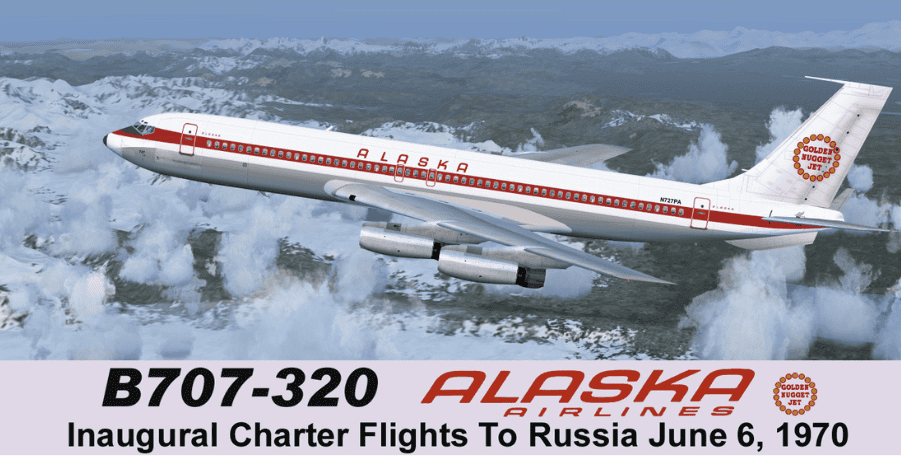
The early 1990s marked a turning point in US-Soviet relations. As Cold War tensions eased under Mikhail Gorbachev’s leadership, economic and cultural ties began to blossom. Seattle, Alaska Airlines’ headquarters, became a focal point for this newfound camaraderie, hosting the 1991 Goodwill Games between the US and Russia.
On 17 June 1991, Alaska Airlines launched scheduled service from Ted Stevens Anchorage International Airport (ANC) to two cities in Russia’s Far East. Anchorage, twinned with Magadan as a sister city, became the launchpad for seasonal flights to Magadan’s Sokol Airport (GDX) and Khabarovsk Novy Airport (KHV), the economic heart of Russia’s East.
Flights operated once or twice weekly, occasionally thrice, and went year-round in 1994. By 1993, Vladivostok International Airport (VVO) and Petropavlovsk-Kamchatsky Airport (PKC) joined the network, with Yuzhno-Sakhalinsk Airport (UUS) added in 1997.
Alaska initially operated the scheduled flights with Boeing 727-200s but eventually replaced them with the more fuel-efficient McDonnell Douglas MD-80s. The Alaskan Mad Dogs were equipped with auxiliary fuel tanks to ensure adequate fuel for the long distances they traversed.
These flights weren’t Alaska’s first foray into Russia. In the early 1970s, “secret negotiations” with Soviet officials led to over two dozen charter flights on Boeing 707s between Anchorage and Russia.
An advertisement for Alaska’s “Golden Samovar Service” in 1970 captures the era’s charm:
In 1988, Alaska operated a poignant “Friendship Flight” from Nome (OME) to Provideniya (PVS), a 45-minute, 55-mile hop on a Boeing 737-200 carrying 82 passengers to reunite Native families separated by the “Ice Curtain” for 40 years. These efforts echoed World War II, when the U.S. ferried 8,000 aircraft to Russia via Nome to fight the Nazis, and Indigenous families moved freely across the Bering Strait until Stalin’s 1948 crackdown sealed the border.
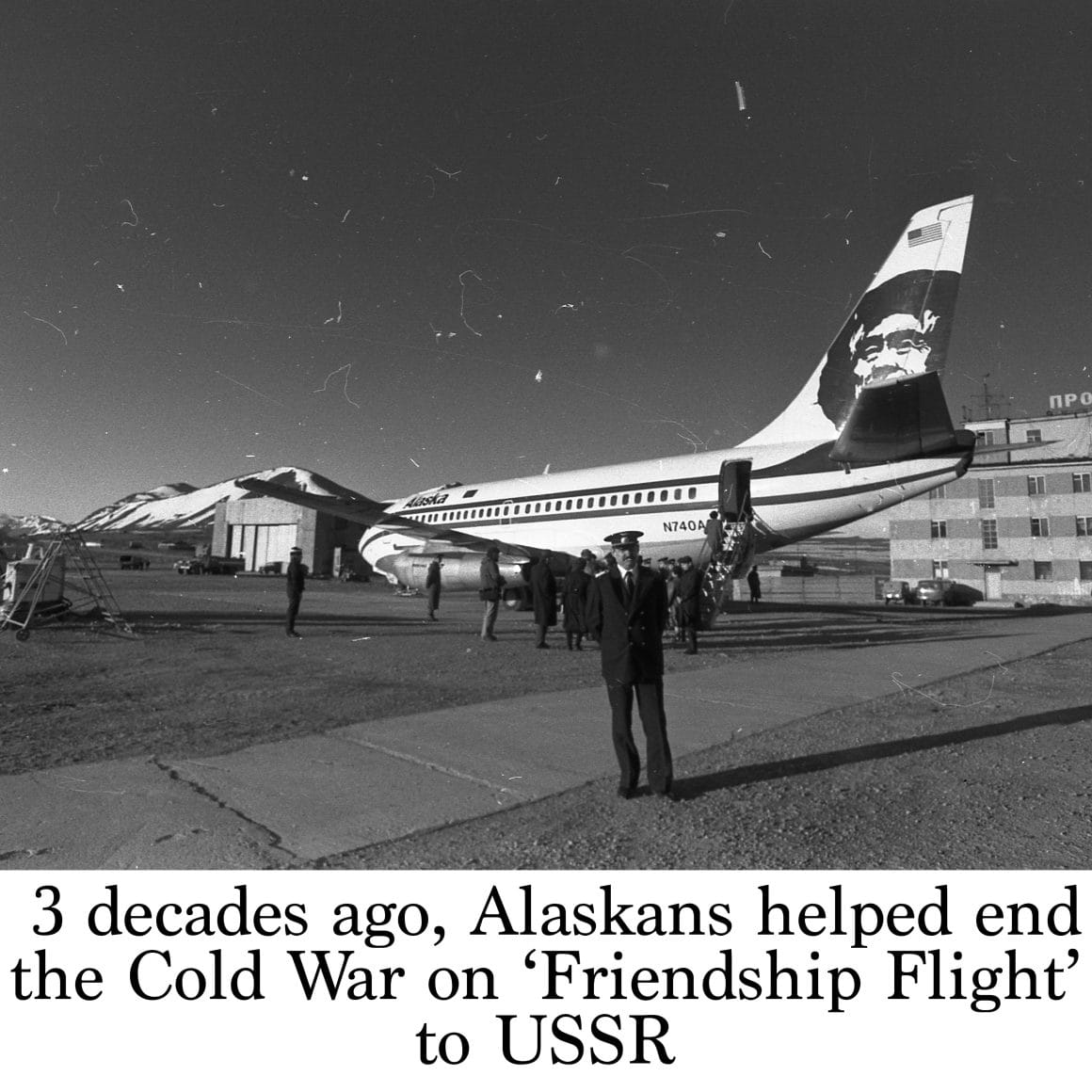
The immediate closure of the border trapped indigenous Alaskans, who had no choice but to assimilate into Soviet culture for the next four decades. Many families were separated, never to reunite again.
Navigating Siberia’s Challenges: Vodka and Boiled Potatoes
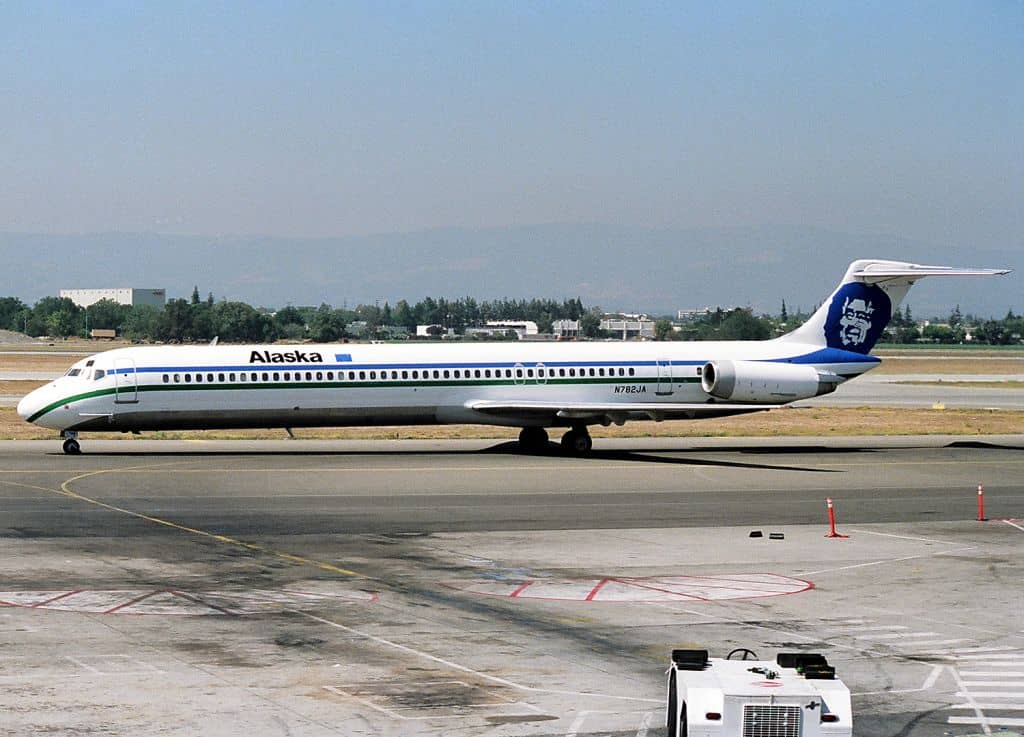
Flying to Russia’s Far East was an operational adventure. The region’s infrastructure was sparse, and reliable weather data from Siberia was nearly nonexistent, making flight planning a gamble. Alternate airports were few and far between, complicating route planning. Airport services like deicing were often unavailable, leading to creative (and controversial) solutions.
In one infamous incident in Magadan, just 400 miles south of the Arctic Circle, a sudden and unexpected temperature drop iced up an MD-80’s wings. With no deicing fluid available, Bill Boser, Alaska’s assistant vice president of flight operations at the time, gathered 25 bottles of vodka from a nearby liquor store. The crew mixed it with glycol and sprayed it on the wings using a garden hose.
The wild story, featured in an in-house Alaska Airlines newsletter in December 1993, sparked regulatory outrage. Investigators warned that vodka’s high alcohol and sugar content could have ignited or gummed up the engines, prompting enforcement action against the airline.
The carrier faced additional challenges while operating its Russia flights. On the inaugural Anchorage to Petropavlovsk flight, a dignitary-loaded plane was forced to return to ANC when PKC authorities denied the captain landing rights. Crews on RONs subsisted on boiled potatoes at local hotels.
Yet, the service had its quirks and charms. Many Russians flew to Anchorage to shop at Costco, stocking up on supplies scarce back home. As Joe Sprague, then Alaska’s senior VP for external relations (now CEO of Hawaiian Airlines as of last year), said in a 2017 Flynn’s Harp interview, “The service to the Russian Far East was really something. It still amazes me to look at the map and think how far away from home base we were flying our old MD-80s for that service.”
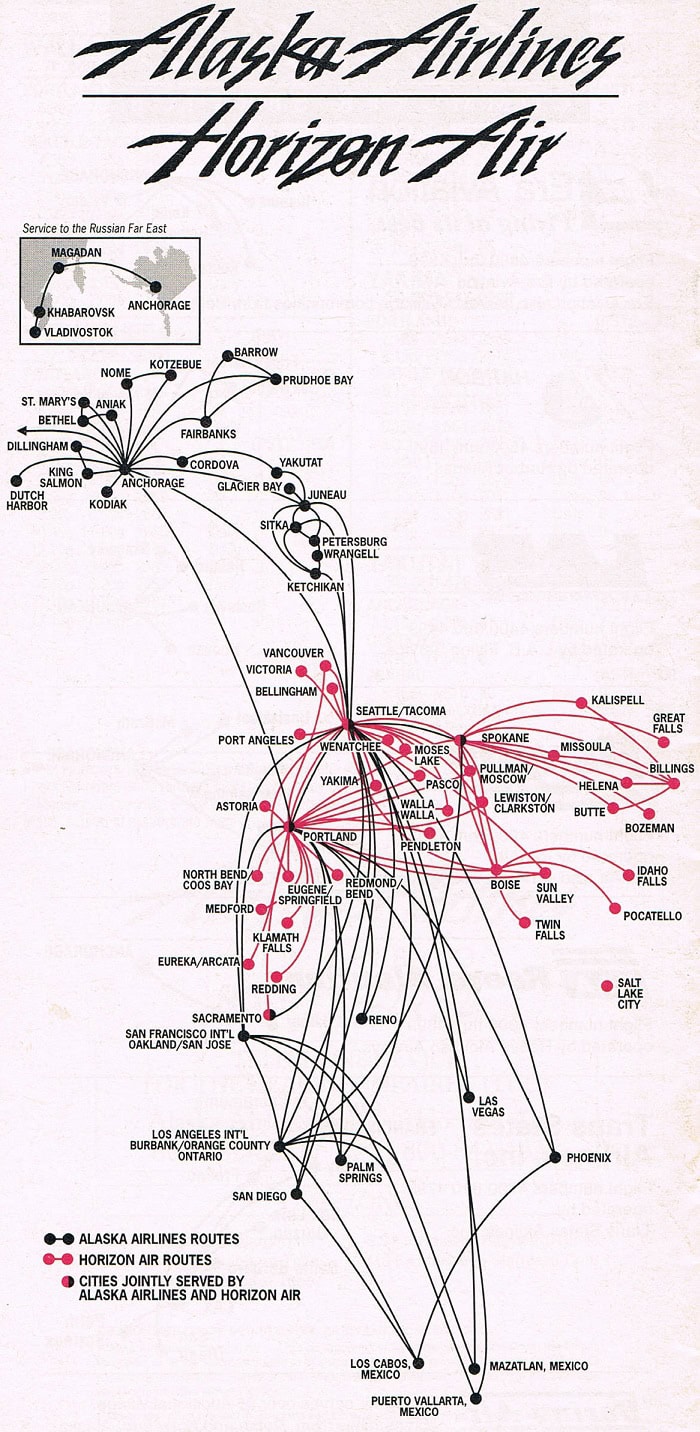
A Bridge of Hope: Cultural and Historical Significance

More than just a business venture, Alaska’s Russian flights symbolized a brief window of optimism. The service harked back to World War II’s open Bering Strait and provided hope that a new and fruitful era of cooperation was underway.
At its peak, Alaska served five Russian destinations: Khabarovsk (KHV), Magadan (GDX), Vladivostok (VVO), Petropavlovsk-Kamchatsky (PKC), and Yuzhno-Sakhalinsk (UUS).
To this day, the image of an Alaska MD-80 landing in Russia’s Far East—a region once a forbidden no-man’s land for Americans—remains surreal. While the service is long gone, a longing for a friendlier era in the years to come provides hope that we could perhaps one day see service return.
The flights carried echoes of history. The 1988 Friendship Flight and the scheduled Alaska flights that operated from 1991 to 1998 aimed to rebuild ties that had been severed since Stalin’s era. They reflected a time when aviation could bridge divides as Cold War suspicions waned.
The Ruble’s Fall and a Fading Dream
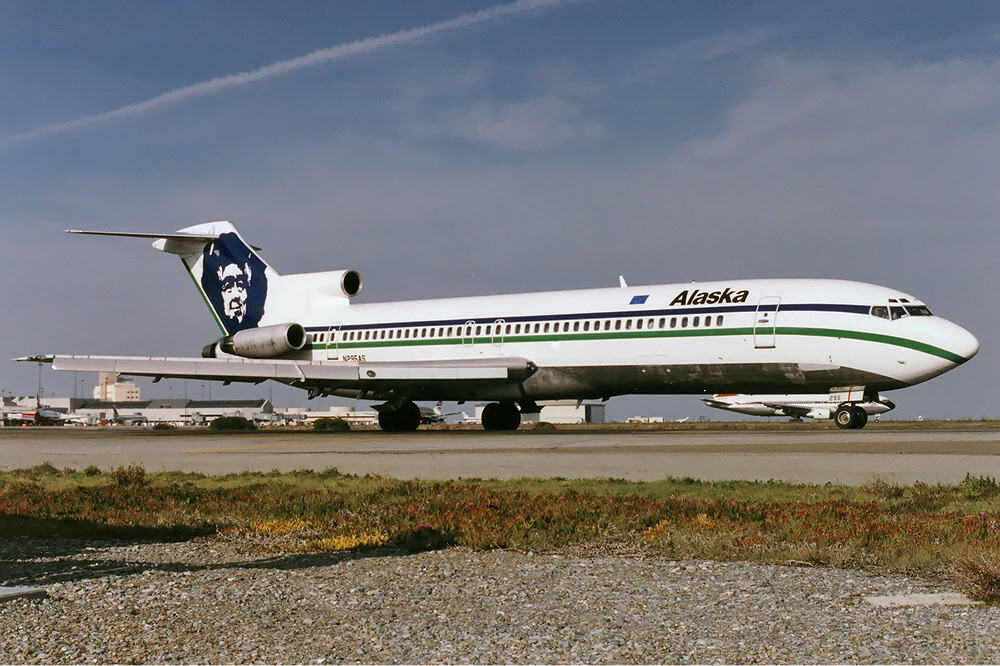
By 1998, Alaska’s Russian venture hit a wall. A devastating economic downturn in Russia, capped by the collapse of the ruble, crushed demand. Alaska canceled all Russian service that autumn, bringing an abrupt end to a bold experiment.
The airline’s exit marked the end of scheduled US-Russia flights from Alaska—a concept now unthinkable. Relations have deteriorated since Vladimir Putin’s rise in 2000, and especially after Russia’s 2022 invasion of Ukraine.
Today, there is no scheduled service between Alaska and Russia.
Alaska’s Russian flights remain a captivating chapter of aviation history—a time when MD-80s crossed the Bering Strait, vodka doubled as deicer, and Costco runs united two nations.
It reminds us of aviation’s extraordinary power to connect friends, enemies, and everybody in between–even when the world feels worlds apart.
